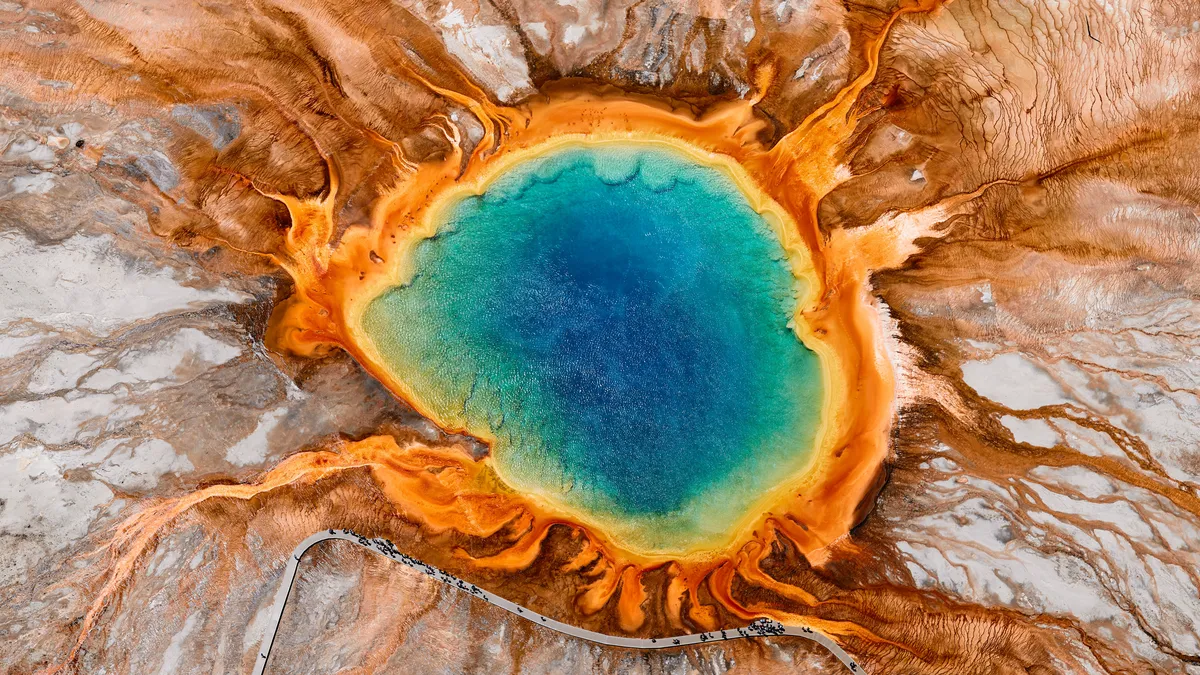
A groundbreaking study has unveiled a breathing cap of magma located deep within the Yellowstone supervolcano. This discovery could significantly enhance our understanding of when the volcano might erupt next. Despite Yellowstone's last major eruption occurring hundreds of thousands of years ago, the supervolcano remains a highly active geological system.
The newly discovered cap lies approximately 2.6 miles (3.8 kilometers) beneath the Earth's surface and functions like a protective lid over the molten magma below. According to the latest findings, this cap not only retains a substantial amount of heat and pressure but also shows a level of porosity that allows for the gradual release of some of that pressure. This mechanism plays a crucial role in preventing a potential catastrophic eruption.
Researchers are now better equipped to pinpoint the origins of Yellowstone's magma and gain fresh insights into the ancient volcanic system. The findings were published on April 16 in the esteemed journal Nature. Co-author Brandon Schmandt, a professor of earth, environmental, and planetary sciences at Rice University, stated, “For decades, we’ve known there’s magma beneath Yellowstone, but the exact depth and structure of its upper boundary has been a big question.” He emphasized that the reservoir has been dynamic and active for millions of years.
Yellowstone is known as one of the largest volcanic systems on the planet. It has experienced three significant eruptions in the past 2.1 million years, with the last major eruption occurring around 640,000 years ago. This eruption was monumental, covering an area of nearly 2,900 square miles (7,500 square kilometers). While researchers do not anticipate another eruption in the near future, and there is no certainty regarding another catastrophic event, the unpredictability of volcanic eruptions continues to challenge scientists.
Schmandt and his team concentrated their research efforts on the northeastern section of the caldera, an area previously indicated as a potential eruption site. To determine the depth of the magma system, they employed a 53,000-pound (24,000 kilograms) vibroseis truck. This specialized equipment generates small earthquakes that produce seismic waves, which are then reflected back from various underground layers. By analyzing the returning waves, researchers were able to accurately gauge the depth of the magma cap.
Utilizing computer models, the team concluded that the cap layer is primarily composed of molten minerals and supercritical water bubbles situated within a porous rock matrix. These bubbles can accumulate pressure, potentially leading to eruptions. However, the findings indicated that in Yellowstone, these bubbles are effectively rising and escaping through the porous cap, thereby alleviating pressure and minimizing the risk of an eruption.
Schmandt likened this geological system to a process of steady breathing, stating, "Although we detected a volatile-rich layer, its bubble and melt contents are below the levels typically associated with imminent eruption." This suggests that the system is adeptly venting gas through microscopic cracks and channels between mineral crystals, a phenomenon that aligns with Yellowstone’s numerous hydrothermal features that emit magmatic gases.
This recent discovery not only enriches our understanding of the Yellowstone supervolcano but also underscores the importance of ongoing research into volcanic activity. As scientists continue to study this complex system, they hope to unravel more mysteries surrounding one of the world's most fascinating geological wonders.